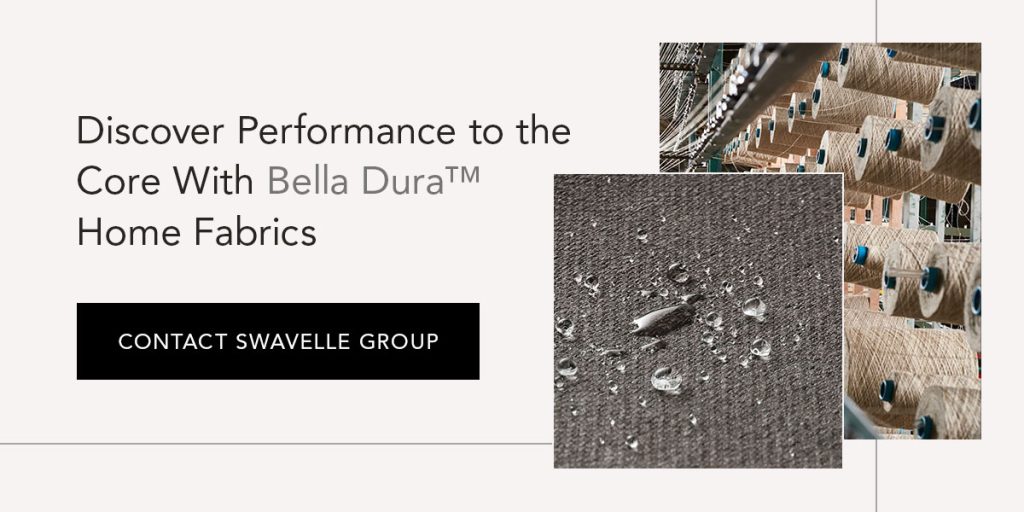Polyester boasts impressive durability and resilience. It holds up well against wrinkles, shrinkage, stains, moisture and sunlight. It’s also easy to clean and maintain. When you consider this list of attributes, it is no surprise that polyester is commonly used in performance fabrics. It also serves many other uses, from home decor and packaging to conveyor belts and automotive parts.
We created this comprehensive guide to polyester fabric, including how it’s made, its common uses and the different types. Learn everything you need to know about this material right here.
Polyester is a synthetic fabric widely used in the textile industry. It’s one of the world’s most popular textiles, serving many uses.
Unlike wool, cotton and other natural fibers, it doesn’t come from a plant. W.H. Carothers originally developed polyester plastic at the DuPont Corporation in the 1930s. In 1941, a team of British scientists expanded on this creation by inventing and patenting the polyester fiber.
Polyester is known for being:
Polyester is technically a plastic. It’s a long-chain polymer comprised of terephthalic acid (TPA). Though it’s a synthetic fiber, its components come from nature. It usually derives from a chemical reaction between petroleum, water and air.
After polyester fabrics were first introduced to the market, they were a clear improvement over natural fibers due to their improved tensile strength. However, many of today’s consumers prioritize eco-friendly purchases. There has been recent pushback against polyester due to its large carbon footprint. Because polyester comes from plastic, it is non-biodegradable. The fibers can take hundreds of years to dissolve.
For this reason, polyester manufacturers are seeking greener production avenues. While polyester typically comes from oil, some manufacturers use more sustainable alternatives like recycled plastic, crops and waste.
Polyester fibers are present in many items we use daily. Here are some examples:

Polyester can fall into one of three categories, depending on its chemical makeup and production process.
PET is the most common polyester type, as it’s the strongest and most cost-effective to manufacture. Petroleum-derived ethylene is its main component. The polymer reacts with other chemicals, forming a durable, fibrous compound.
PET polyester fulfills many uses in the textile and packaging industries. It is the standard plastic for soda and water bottles. Manufacturers also use it to mold components for electronics and vehicles.
Manufacturers often blend ethylene glycol with dimethyl terephthalate (DMT) to produce plant-based polyesters. Petroleum is the standard source of ethylene in other polyesters.
However, some manufacturers use alternative ethylene sources like sugarcane, bio-waste, sawdust and food scraps. These biodegradable resources differentiate plant-based polyester from other types. Plant-based polyester reduces the dependency on petroleum, making it an eco-friendlier choice.
Plant-based polyester fabric is produced less frequently than PET due to higher costs and lower tensile strength. However, the fabric is biodegradable and better for the environment. It caters to those who prioritize sustainable manufacturing practices.
PCDT stands for poly-1, 4-cyclohexylene-dimethylene terephthalate, the primary component of this polyester. Like PET, PCDT contains ethylene glycol mixed with DMT. However, the two types differ in their production processes, giving them slightly different consistencies. PCDT tends to be more durable and elastic, making it suitable for upholstery and curtains.
Polyester fabric manufacturing can vary depending on the intended outcome. For instance, creating smooth, soft fabrics requires the manufacturer to yield thinner fibers. Additionally, plant-based polyester uses ethylene from cane sugar instead of petroleum.
However, polyester production usually involves the following steps:
Choosing durable, wear-resistant materials like polyester is essential when producing superior textile products. Polyester for performance fabrics provides years of quality, comfort and durability. At Swavelle Group, we design our Bella Dura™ Home Fabrics with the utmost strength and longevity in mind.
We weave these fabrics with either polyolefin, polyester or a combination of yarns, along with a solution-dyeing process. This construction allows our products to withstand even the most demanding environments. Bella Dura™ Home Fabrics are bleach-cleanable and stain-resistant. They also repel mildew and bacteria, making them ideal for outdoor applications.
You can also access the following benefits by choosing Swavelle Group for your performance fabric needs:

Give your customers an effortless blend of beauty and durability when you invest in Bella Dura™ Home Fabrics. If you want to learn more about our innovative performance fabrics, contact one of our representatives today.